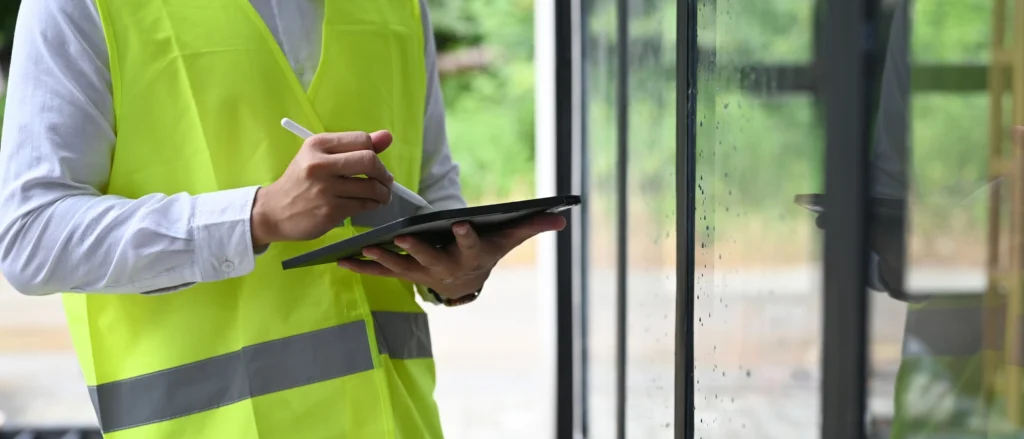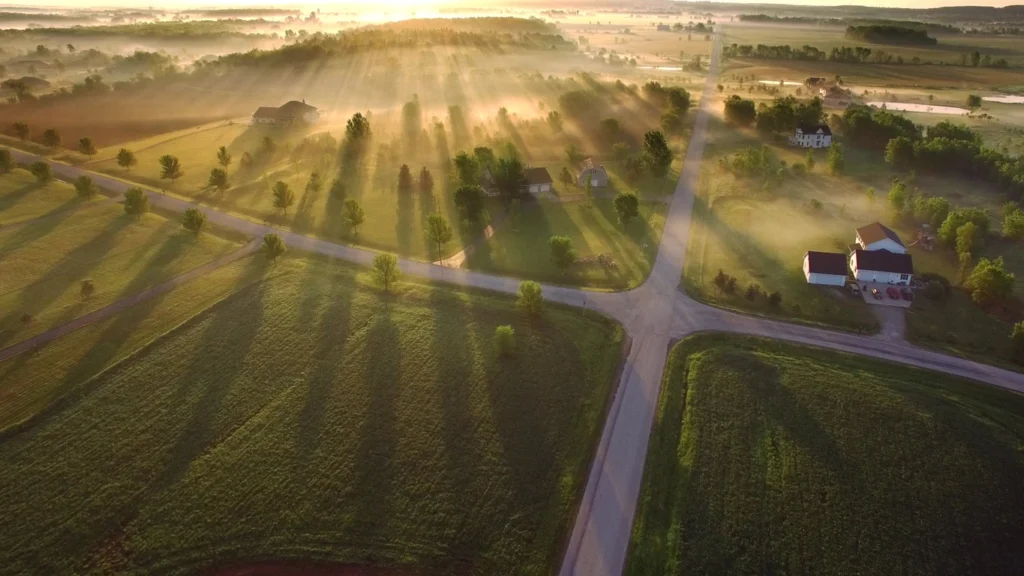A Records Search with Risk Assessment (RSRA) is a desktop study, examining historical records and government databases to identify potential environmental concerns associated with a property. RSRAs are often used for initial screening to gain insights into a property’s history.
SBA Connection: The Small Business Administration (SBA) frequently utilizes RSRAs as a way to meet environmental due diligence requirements for its loan programs. RSRAs offer a streamlined and cost-effective method of environmental assessment.

The RSRA Process: A Step-by-Step Guide
Database Research
- Federal Databases:
- National Priorities List (NPL): Identifies Superfund sites, the nation’s most contaminated properties requiring long-term remediation.
- Resource Conservation and Recovery Act (RCRA): Lists facilities that generate, transport, treat, store, or dispose of hazardous waste.
- Brownfields: Properties with known or suspected contamination, potentially eligible for redevelopment grants.
- Other databases may include those tracking leaking underground storage tanks (LUSTs) or sites with institutional controls.
- State & Local Databases: State and county-level environmental agencies often maintain their own databases that complement federal listings. These might include:
- State-equivalent Superfund sites
- Registered underground storage tanks (USTs) and leaking UST sites.
- Landfills
- Lists of known or potential contaminated properties
- Records of spills, releases, or enforcement actions
- Purpose: Database searches focus on identifying past or present activities at or adjacent to the property, potentially raising concerns about soil, groundwater, or vapor intrusion issues. Red flags include past industrial use, dry cleaners, gas stations, auto repair facilities, or proximity to known contaminated sites.
Historical Records:
- Fire Insurance Maps: These maps were designed for fire insurance underwriting and often depict building footprints, street layouts, and past land uses. Clues to potential environmental concerns include the presence of manufacturing facilities, chemical storage areas, or fuel tanks.
- Aerial Photographs: Historical aerial photos offer snapshots of the property and surrounding areas over time. Changes in land use, the appearance of stockpiles, disposal areas, or industrial structures can suggest potential sources of contamination.
- City Directories: These directories provide a reverse-lookup of businesses associated with a specific address. Identifying past occupants operating in environmentally sensitive industries can highlight areas for further scrutiny.
Environmental Questionnaire
This questionnaire, typically completed by the property owner or occupant, gathers information not readily available in records. Questions might address:
- Current and previous uses of the property
- Storage and handling of hazardous chemicals or petroleum products
- Presence of underground or aboveground storage tanks
- Waste disposal practices
- Past spills, releases, or environmental concerns
Risk Determination
The environmental professional carefully reviews all the information gathered. They use their expertise to assess the potential for environmental contamination based on past property uses, findings from database searches, clues from historical records, and any disclosures in the environmental questionnaire. The property then typically receives a “Low” or “High” environmental risk classification.

Real-World Implications of an RSRA
Example 1: “Low Risk” Finding:
Consider a scenario where the property in question is a vacant lot historically used for residential purposes. The RSRA reveals no concerning entries in databases and historical records support the consistent residential use. In this case, a “Low Risk” finding allows for a smoother transaction. Lenders might accept this level of due diligence, especially for SBA loans. Buyers can proceed with greater confidence that the likelihood of hidden contamination is low.
Example 2: “High Risk” Finding:
Imagine the RSRA uncovers that the property was formerly a dry cleaning facility. Dry cleaners often used hazardous chemicals that can persist in soil and groundwater. This finding would likely trigger a “High Risk” classification, indicating a Phase I ESA is necessary. The Phase I ESA, with its site visit and potential sampling, would provide a more comprehensive analysis to identify any contamination and determine its extent.
Beyond the Examples:
It’s important to note that not all “Low Risk” findings lead to immediate transactions, and not all “High Risk” findings mean a deal is dead. Here’s why:
- “Low Risk” with Further Action: Even with a “Low Risk” finding, a buyer or lender may opt for a limited Phase I ESA or additional investigation if something in the RSRA raises a minor concern.
- “High Risk” Next Steps: A “High Risk” finding gives the buyer leverage to negotiate remediation costs with the seller or strategize risk mitigation, such as environmental insurance. They may decide to proceed with the transaction if the other aspects are favorable.

Why Conduct an RSRA?
Cost & Time Savings
RSRAs offer significant savings in both cost and time compared to full Phase I ESAs. This makes them especially attractive for smaller transactions, properties deemed low-risk, and scenarios where decisions need to be made quickly.
Informed Decision-Making
Even with its limitations, a well-conducted RSRA provides valuable information about a property’s environmental history. This knowledge empowers buyers and lenders to make informed decisions, even in the early stages of a potential transaction. Here’s how:
- Low-Risk Confidence: A thorough RSRA with no red flags offers greater confidence in proceeding with a low-risk property.
- Risk Identification: An RSRA can quickly identify potentially significant environmental concerns, allowing buyers to reevaluate the transaction or negotiate early on.
- Guidance for Next Steps: The RSRA results inform whether to proceed confidently, terminate the deal, or initiate a more comprehensive Phase I ESA.
Specific Benefits for SBA Loans
RSRAs align well with the requirements of the Small Business Administration’s lending programs. Often, an RSRA can satisfy environmental due diligence for SBA loans, simplifying and expediting the process for small businesses seeking financing.
Limitations of the RSRA
No Site Visit
As a purely records-based assessment, the RSRA cannot uncover environmental concerns that might be visually apparent on a site inspection. This includes:
- Improperly stored chemicals or containers
- Stained soil or unusual odors
- Evidence of stressed vegetation
- Potential illegal dumping areas
Potential for Missed Concerns
Contamination may exist from undocumented activities, illegal practices, or historical events not reflected in standard databases or records. Situations that might be missed include:
- Localized contamination or small spills not reported to authorities
- Improper past waste disposal practices leaving no paper trail
- Contamination migrating from an off-site source that wouldn’t appear in typical database searches
Importance of the Environmental Professional
The quality and thoroughness of an RSRA heavily depend on the expertise of the environmental professional conducting it. A poorly executed RSRA might miss crucial details or fail to appropriately analyze the data.
It’s essential to understand that an RSRA does not offer the same level of assurance as a Phase I ESA. Recognizing these limitations is crucial for making informed risk-based decisions in real estate transactions.
The Power of RSRAs: Informed Real Estate Decisions
RSRAs play a valuable role within the broader spectrum of environmental assessments for real estate transactions. While they have limitations and shouldn’t be considered a substitute for a Phase I ESA in high-risk situations, RSRAs offer a streamlined and cost-effective way to gain a preliminary understanding of a property’s potential environmental liabilities.
When used appropriately, RSRAs empower buyers, lenders, and small businesses to make informed decisions, expedite transactions for low-risk properties, and strategically navigate environmental due diligence requirements. Consulting with a qualified environmental professional is crucial to ensure a well-executed RSRA and to properly interpret the findings for your specific real estate needs.
Frequently Asked Questions About RSRAs
My property is a small residential lot. Is an RSRA enough, or do I need a Phase I ESA?
An RSRA might be sufficient initially, especially if it reveals a consistent history of residential use with no red flags in the records or historical documents. Many lenders accept RSRAs for such properties, and especially for SBA loans. However, if anything in the RSRA raises even slight concerns, a limited Phase I ESA might be prudent for greater peace of mind.
The RSRA shows the neighboring property was a gas station. Should I be worried about contamination on my property?
Yes, this is a valid concern. Depending on factors like the distance between the properties, groundwater flow direction, and the nature of operations at the former gas station, there’s a potential for contamination to have migrated onto your property. In this scenario, while an RSRA raises the red flag, a Phase I ESA would be recommended for a more thorough assessment.
I need to make a quick decision on a property. How long does an RSRA take?
One major advantage of RSRAs is their speed. While turnaround time depends on the complexity of the property and availability of records, many RSRAs can be completed within a few days to a week. This is significantly faster than a Phase I ESA.
I’m not getting a loan, but I’m concerned about the long-term costs of potential cleanup. Is an RSRA worth the investment?
Absolutely. Even without a lender involved, an RSRA offers a cost-effective way to gain insights into a property’s history. If the RSRA suggests low risk, you can proceed confidently. If it reveals potential environmental issues, you can negotiate with the seller over responsibility for further investigation or remediation before closing the deal.
What exactly does the environmental professional look for when conducting an RSRA?
Environmental professionals conducting RSRAs meticulously examine:
- Databases: They search for any records of spills, releases, permitted facilities, Superfund sites, etc., on or near the property.
- Historical Records: Fire insurance maps, aerial photographs, and city directories can reveal past uses that might have left contamination.
- Environmental Questionnaire: This helps uncover information about the property’s history that might not be in readily available records.